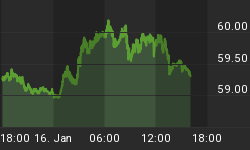Over two days of Senate hearings, Federal Reserve Chairwoman Janet Yellen addressed a number of questions and concerns related to US monetary policy and potential impacts on our economy and financial markets. Among the numerous items discussed was the potential for the Fed to react to further improvement in labor markets by raising short-term interest rates (http://online.wsj.com/articles/feds-yellen-u-s-economy-continues-to-improve-but-recovery-not-yet-complete-1405432838).
This wouldn't be the worst possible Fed reaction, but it's nevertheless the wrong tack. Instead of raising near-term rates by adjusting the Fed funds or discount rates, the Fed should liquidate all or some of its excessive portfolio of long-term US treasury bonds.
The majority of this country's major economic expansions of the past century have been preceded by a steepening of the yield curve (the line drawn along yield rates of US treasury notes and bonds of various durations), not a flattening. With long-term rates currently just above short-term rates - and offering almost zero return to long-term fixed income investors like retirees or pension funds - it's far more important to see increases in long-term rates rather than shorter-term. After all, raising short-term rates would serve to flatten the yield curve, which historically precedes a slowdown of economic growth, and with short-term rates at or near zero, they simply can't be cut any more than they already have.

Credit: StockCharts.com
Admittedly, the Fed is correct in thinking that it should respond if labor markets continue to improve, and this has actually been occurring over the past several years. Yes, the stated employment rate is still over 6%, and yes, that is higher than its long-term average; but that's still far better than the 10% peak seen in 2009.
However, broader unemployment still has considerable room for improvement. The U6 rate consists of "unemployed, marginally attached workers, and the total employed part time for economic reasons" and is a relatively new metric - as economic indicators go. That number peaked at just over 17% in 2009-10, and stands now at just over 12%.
We still have a long way to go to get back to full employment, and the Fed's proposed response is wrong if it hopes to see further improvement in the jobs market, let alone a resumption of real GDP growth. This can be best achieved not by raising short-term rates, but by beginning to increase the cost of long-term borrowing. Doing so would give US companies an impetus to start borrowing now to pursue expansion projects - before costs rise further. This could kick the US economy back into high gear and begin a real recovery that has so far failed to appear post-2008.
Obviously these actions would have implications for the US inflation rate. Money created over the past seven years in response to the financial crisis would start to work its way into the economy, ultimately leading to more dollars chasing a relatively fewer goods and services and resulting price increases. The Fed needs to recognize, though, that money's been created; they can't un-ring that bell. But at least if long-term rates rise, retirees and other fixed income investors will be able to earn some kind of return on their money.
In order to see resumption of economic expansion in this country, we desperately need to see the velocity of money move back up. Money velocity - defined as GDP growth divided by change in money supply - is a much older economic indicator than U6, and in the past four years it's moved into uncharted territory. It now sits at an all-time low.

Source: St. Louis Fed
In order for any real economic expansion to begin, it will have to coincide with a recovery of money velocity. This, we fear, will not occur if the Fed takes actions like those recently proposed by Janet Yellen during her recent Congressional testimony. For the US economy to get on track, the path we need to follow leads to a steepening of our yield curve through long-term rate hikes, not a flattening that will only continue to punish this nation's retired population and pension fund investors.
















